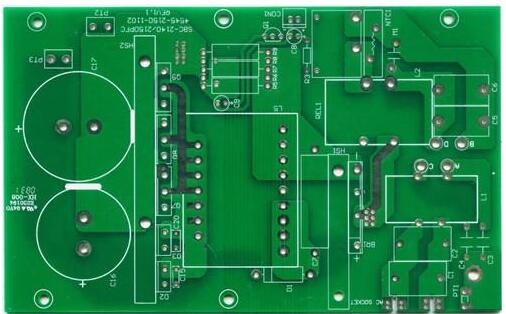Talking about high-performance mobile phone simulation optimization from PCB design
PCB board is the basic component of electronic products, and its quality is directly related to the function and life of electronic products. In the past two years, the focus of the PCB market has shifted from the fields of computers and communications to mobile terminals such as smartphones and tablets. At the same time, electronic products, including smart phones, are increasingly becoming smarter, thinner, and more sophisticated. As the complexity of the system increases day by day, it will bring greater design difficulty to PCB designers, and it will be difficult for them to find problems in the early stages of design and development.

Feasibility analysis before design
It is understood that for different PCB board types and IC platform solutions, the same mobile phone or several teams at the same time are working on several different PCB design solutions. When there are multiple PCB solutions that need to be evaluated, the preliminary feasibility analysis ( Placement and routing channel evaluation) will rely on experienced engineers to spend a lot of time.
In addition, with the current research and development of an electronic product, the PCB board size is getting smaller and smaller, and the number of components has increased significantly, which also brings a lot of trouble to the PCB design. On the premise of 100% deployment rate, many factors such as signal quality and manufacturability must be taken into consideration. On the premise of ensuring quality, it is also necessary to pursue higher cost performance, which adds greater difficulty to the project. These problems will lead to a large proportion of the pre-evaluation time in the entire product development cycle.
There are two traditional evaluation methods: one is to judge based on experience, and the disadvantage is that the evaluation result is not accurate enough; the other is to evaluate based on the actual layout. This method is accurate, but it takes too long. In addition, the above two methods both face the shortcomings that the evaluation cannot be carried out collaboratively and the evaluation results are difficult to be reused.
How to quickly and accurately carry out the preliminary evaluation and obtain a feasible design plan is an important move to accelerate the launch of the product. To this end, Mentor brings an efficient layout platform based on Xpedition. With the help of this platform, time can be saved while satisfying accurate evaluation. The evaluation results can also be directly reused by the subsequent design team to accelerate product design. Experiments have proved that the traditional evaluation method requires two to three weeks, and the use of Mentor's evaluation program will shorten the time within one week, which is equivalent to saving two-thirds of the time for the customer.
Why does Mentor's platform have unique advantages? On the one hand, most of the current mainstream mobile phone chip manufacturers are developing based on Mentor’s Xpedition platform. Therefore, when their products are handed over to downstream mobile phone manufacturers, if the latter also use the Mentor platform, they can directly reuse the reference design, and Make accurate assessments. On the other hand, the Xpedition platform has numerous tools and complete functions, which can accelerate evaluation and improve efficiency.
It is understood that the current mainstream mobile phone manufacturers have basically adopted Mentor's platform solution for the preliminary evaluation of mobile phone design.
Simulation optimization after PCB layout
As PCB high-speed signal design becomes more and more common, the design of electronic circuits is increasingly facing the challenges of signal integrity, power integrity, thermal, electromagnetic compatibility and other issues. Therefore, after the preliminary feasibility analysis and the completion of the PCB board wiring, the PCB board also needs to be simulated and verified. The introduction of simulation verification methods in the design will greatly improve the efficiency of product development and the correctness of the design.
Among them, power integrity simulation is one of the main challenges. The level of power integrity design directly affects the performance of the system, such as the reliability of the whole machine, signal-to-noise ratio and bit error rate, and important indicators such as EMI/EMC. With the advent of changes in circuit signal edge rates, simultaneous switching of a large number of I/Os, and low-power design, power transmission issues have become increasingly important. Take a smart phone as an example. The power simulation of its PCB board faces several major pain points: Power Domain grouping in mobile phone design is often very complicated. In order to perform power integrity simulation, engineers often need to spend a lot of time on cumbersome port settings. Certainly, the simulation process takes a lot of time, and it will also lead to engineers not having time to optimize the decoupling capacitors.
To this end, Mentor brings automated power optimization solutions. The traditional method requires a lot of time to edit ports. Using Mentor's automatic port setting solution, customers can automatically create the required ports based on the Power Domain information, which can greatly shorten the port editing time. Experiments have proved that with this scheme, the time required for port establishment can be reduced from 2 days to ten minutes, and there is no need to spend a lot of time re-editing the port after design changes. In addition, Mentor also provides an automatic decoupling solution optimization solution. The HyperLynx software platform can automatically identify the port mode of the decoupling capacitor. By calling the PDN optimizer and using the optimization algorithm for automatic optimization, the type and number of capacitors can be reduced at the same time.
At the same time, regular inspections of decoupling solutions, pre-evaluation of decoupling design, and EMI-related power plane inspections can all be solved by Mentor's solution.